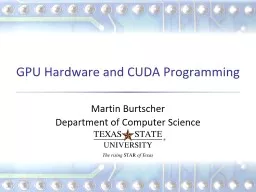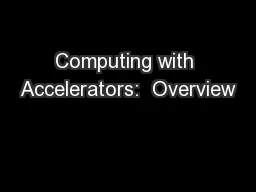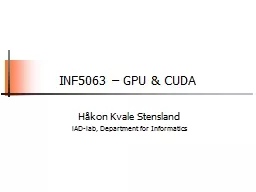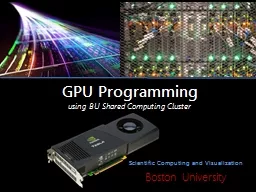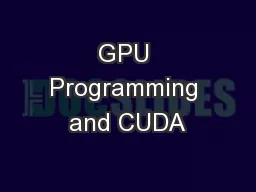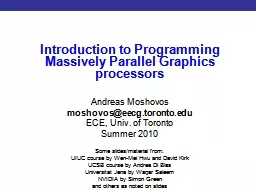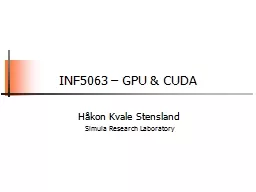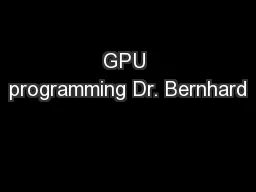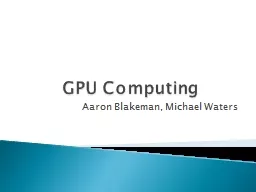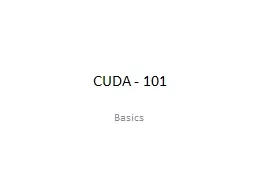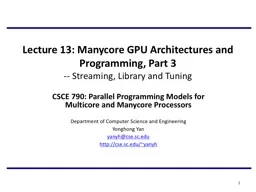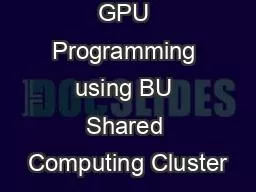PPT-GPU Hardware and CUDA Programming
Author : webraph | Published Date : 2020-11-06
Martin Burtscher Department of Computer Science Highend CPUGPU Comparison Xeon 8180M Titan V Cores 28 5120 640 Active threads 2 per core 32 per core Frequency
Presentation Embed Code
Download Presentation
Download Presentation The PPT/PDF document "GPU Hardware and CUDA Programming" is the property of its rightful owner. Permission is granted to download and print the materials on this website for personal, non-commercial use only, and to display it on your personal computer provided you do not modify the materials and that you retain all copyright notices contained in the materials. By downloading content from our website, you accept the terms of this agreement.
GPU Hardware and CUDA Programming: Transcript
Download Rules Of Document
"GPU Hardware and CUDA Programming"The content belongs to its owner. You may download and print it for personal use, without modification, and keep all copyright notices. By downloading, you agree to these terms.
Related Documents

